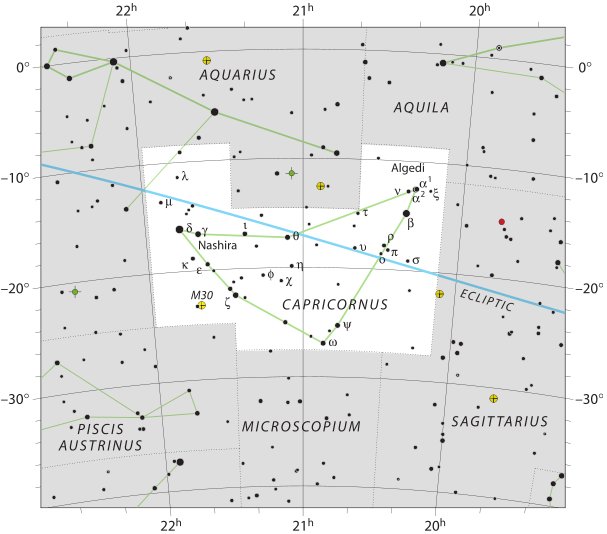4. Wikipedia states there was a season (anwaa) named The Three Saads:
Al Sa'd al Dhābi, the Lucky One of the Slaughterers, should correspond to Saad Al Thabib, because the star has a similar name:
Once these stars probably marked the horns of Capricorn, where the constellation begins:
Spring equinox north of the equator is normally day number 79 or 80 (cfr at Mago) and located on March 21st. Thus the seaon of The Three Saads evidently leads up to spring equinox. Therefore on Easter Island The Lucky One of the King ought to coincide with the beginning of the 2nd quarter and the month Vaitu nui:
There are 28 days from Gb1-14 to Gb2-16:
The Arab manzil system of lunar mansions as described in Wikipedia: "In the traditional Arabic astrological system, the moon was seen to move through 28 distinct manazil (singular: manzil) during the normal solar year, each manzil lasting, therefore, for about 13 days. One or more manazil were then group[ed] into a nawaa (plural anwaa) which were tied to a given weather pattern. In other words, the yearly pattern was divided in the following manner: A year was divided into anwaa, each of which was made up of one [or] more manazil, which were associated with a dominant star or constellation ..." Though the list of manazil in Wikipedia has Saad Al Thabib in place number 22, not as number 20 which Allen says. |
||||||||||||||||||||||||||||||||||||||||||||||||||||||||||||||||||






